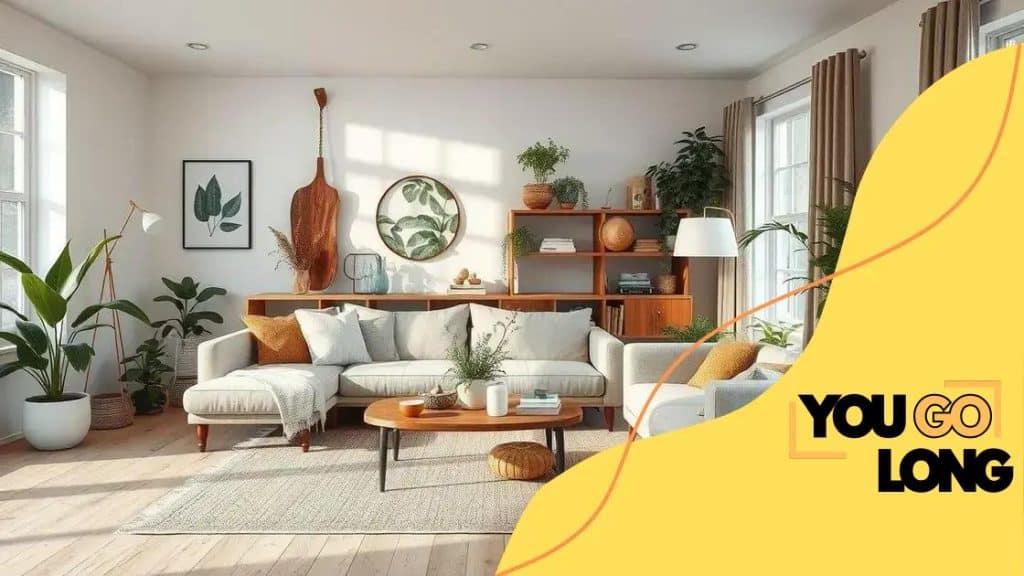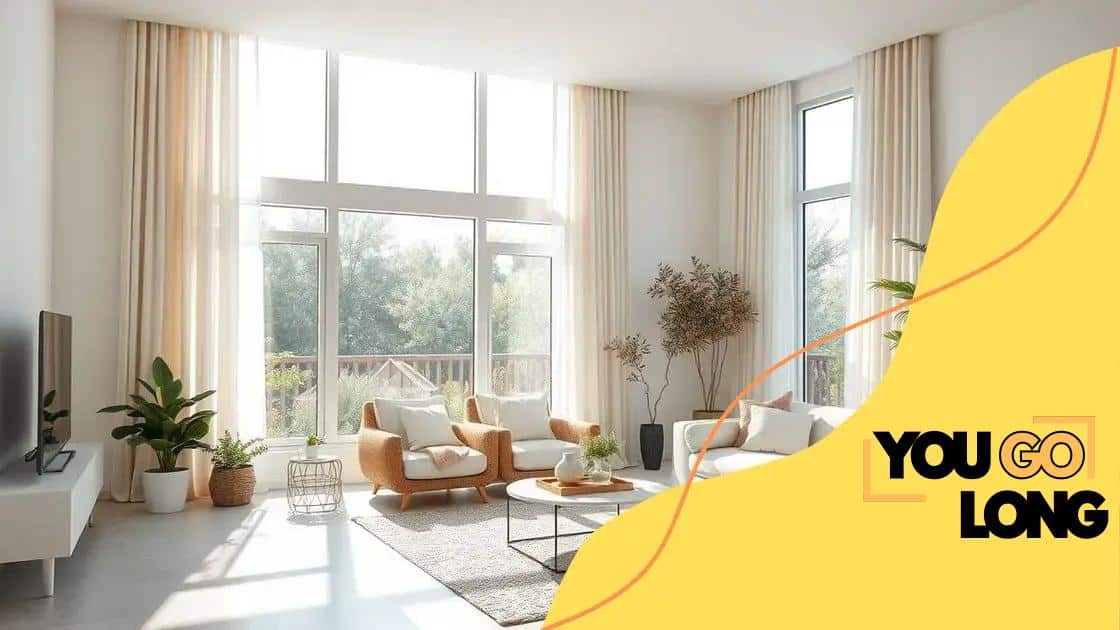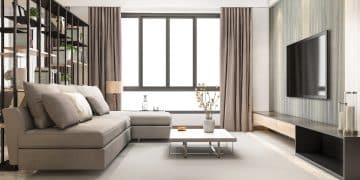How to incorporate sustainable design in home decor

Advertisement
To incorporate sustainable design in home decor, use eco-friendly materials, maximize natural lighting, and create a cohesive color palette that reflects nature while mixing vintage and modern elements for a personalized touch.
How to incorporate sustainable design in home decor might seem daunting, but it’s easier than you think. Imagine making your living space not only beautiful but also earth-friendly. Ready to dive into this exciting journey?
Understanding sustainable design principles
Understanding sustainable design principles is essential for creating a home that respects our planet. It focuses on using resources wisely and minimizing environmental impact. By applying these principles, you can transform your living space into a more ecologically responsible environment.
Key Principles of Sustainable Design
Sustainable design emphasizes several core concepts that help guide your decisions. These principles create a balance between style and environmental responsibility. Energy efficiency, for example, reduces energy use in your home, lowering bills and carbon footprint.
Advertisement
- Resource conservation: Use materials that are renewable and sourced responsibly.
- Efficient use of space: Design with multi-functionality to reduce the need for excess.
- Environmental harmony: Ensure your home blends with and protects the natural surroundings.
- Health and well-being: Prioritize materials that promote good air quality and comfort.
In addition to these principles, integrating local materials can boost your home’s sustainability. It reduces transportation emissions and supports the local economy. Consider elements such as reclaimed wood, bamboo, or even locally made textiles for your decor.
Furthermore, natural light plays a crucial role in sustainable design. Utilizing windows and skylights not only enhances the aesthetic but helps cut down on artificial lighting needs. A well-lit space can significantly impact your mood and energy consumption.
Ultimately, understanding sustainable design principles allows you to create a home that doesn’t just look good but feels good too. Every choice counts, and with the right information, you can make decisions that align with your values and the environment.
Advertisement
Selecting eco-friendly materials
Selecting eco-friendly materials is a crucial step in creating a sustainable and beautiful home. These choices not only benefit the environment but can also enhance your overall living experience. Using natural, renewable, and locally sourced materials can significantly reduce your home’s carbon footprint.
Types of Eco-Friendly Materials
When considering materials, look for those that are both sustainable and durable. Here are a few great options:
- Bamboo: A fast-growing grass that is strong and versatile.
- Reclaimed wood: Perfect for adding character while saving trees.
- Recycled metal: Ideal for furniture and fixtures, reducing waste.
- Natural fibers: Such as cotton, wool, and hemp for textiles.
Integrating these materials into your home decor can make a striking difference. For instance, a table made from reclaimed wood not only tells a story but also brings warmth to your space. Additionally, using non-toxic paints and finishes can enhance the healthiness of your indoor environment.
Furthermore, you can consider selecting certified products. Look for labels like FSC (Forest Stewardship Council) or Green Seal which ensure the materials have been sourced responsibly. These certifications give you peace of mind about your choices.
Ultimately, every decision counts when selecting eco-friendly materials. By integrating these options into your home, you contribute to a healthier planet while creating a unique and inviting atmosphere.
Incorporating natural lighting

Incorporating natural lighting into your home design is an essential aspect of sustainable decor. Natural light not only makes spaces feel brighter but also helps reduce energy costs. Open up your space to sunlight while enhancing your overall well-being.
Benefits of Natural Lighting
Utilizing natural light has several advantages that contribute to a healthier home environment. Here are some key benefits:
- Improved mood: Exposure to sunlight can boost your spirits and increase productivity.
- Energy efficiency: Reduced reliance on artificial lighting saves electricity and lowers your bill.
- Better air quality: Sunlight can help eliminate indoor pollutants and bacteria, leading to fresher air.
- Enhanced aesthetics: Beautiful natural light creates dramatic shadows and enhances color in your decor.
To take advantage of natural light, consider strategic placement of windows. Large, unobstructed windows can welcome an abundance of sunlight into any room.
Additionally, skylights are a fantastic option for bringing light into spaces that might otherwise be dim. They provide an excellent source of light and allow you to enjoy the sky above.
Another tip is to keep window treatments light. Sheer curtains or blinds can diffuse the sunlight while still letting it in. Reflective surfaces, such as mirrors, can also amplify natural light, making rooms feel larger and brighter.
By thoughtfully incorporating natural lighting, you can create a more inviting atmosphere while enjoying the many benefits of sunlight in your home.
Mixing vintage and modern elements
Mixing vintage and modern elements in your home decor can create a unique and inviting atmosphere. Combining these styles allows you to express your personality while incorporating sustainability into your design choices. Vintage items often have stories and character, while modern pieces can add a fresh and contemporary feel.
Choosing the Right Pieces
When blending styles, focus on selecting items that complement each other. Consider these tips:
- Color Palette: Use a cohesive color scheme to unify the different styles. Decide on a few main colors that work together well.
- Contrast: Pair bold modern designs with soft vintage textures or patterns. This contrast can create visual interest.
- Scale: Balance the sizes of your furniture. A large modern couch can pair well with a vintage coffee table.
- Functional Decor: Incorporate both styles in functional ways, such as vintage storage solutions with modern lighting fixtures.
Additionally, consider displaying your vintage finds as art. Items like antique mirrors or framed vintage textiles can serve as stunning focal points while merging styles harmoniously.
Another effective strategy is to mix furniture styles in one room. A mid-century chair can pair beautifully with a contemporary sofa, creating an eclectic yet cohesive look. Use textiles—like throw pillows or rugs—that echo patterns or colors from both periods to tie the space together.
Using plants can also bridge the gap between the old and the new. Choosing modern planters for vintage plants can add a fresh touch and bring life to your decor.
Creating a sustainable color palette
Creating a sustainable color palette for your home decor is an important step in expressing your personal style while being mindful of the environment. A well-thought-out color scheme can make any room feel cohesive, inviting, and warm.
Choosing Eco-Friendly Colors
When selecting colors, consider using paints and materials that contain low or no volatile organic compounds (VOCs). Natural pigments are a great option, as they are less harmful to your health and the environment.
- Neutral tones: Colors like beige, gray, and cream can provide a calm and timeless backdrop.
- Earthy hues: Shades of green, brown, and terracotta can make your space feel connected to nature.
- Pastel colors: Soft blues and pinks often promote relaxation and tranquility.
- Accent colors: Use brighter shades sparingly to add energy without overwhelming the senses.
Using a limited color palette can create a sense of harmony in your space. For instance, pairing a muted green with soft whites and browns can evoke feelings of serenity, making your home feel cozy and inviting.
It’s also essential to think about lighting when choosing colors. Natural light can significantly alter how a color appears in your space. Therefore, test paint samples in different lighting conditions before making a final choice.
Moreover, incorporating colorful textiles can enhance your palette. Look for cushions, rugs, and curtains made from organic materials that match your color scheme while keeping sustainability in mind.
FAQ – Frequently Asked Questions about Sustainable Design in Home Decor
What are eco-friendly materials?
Eco-friendly materials are those that are sustainable, non-toxic, and often recycled or sourced responsibly to minimize environmental impact.
How can I increase natural light in my home?
You can increase natural light by using larger windows, skylights, and light-colored window treatments to allow more sunlight to enter.
What colors are best for a sustainable color palette?
Best colors include neutral tones, earthy hues, and natural pigments that are low in VOCs and create a calming environment.
How can I mix vintage and modern decor effectively?
Choose a cohesive color scheme, balance sizes of furniture, and use contrasting styles to create a unique and harmonious design.





